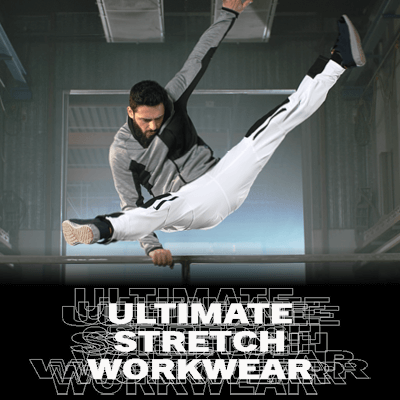en-61482-2
MASCOT products that are certified in accordance with IEC 61482-2 provide users with different forms of protection against thermal hazards from electric arcs.
Clothing that is certified in accordance with IEC 61482-2 protects against the thermal hazards associated with electric arcs. During an arc blast, clothing can be exposed to flames, radiation and metal shrapnel from electrodes. It is therefore important that you are wearing the right clothes. Your clothing needs to provide sufficient insulation to protect against any flames and metal shrapnel, and to protect you against intense heat and the risk of second-degree burns. For optimal protection, your workwear needs to cover your entire body. Jackets and trousers need to be worn together with other items of protective equipment, such as a hardhat with face shield, protective gloves and safety footwear, in order to ensure the correct level of protection. You can also use multiple layers to further increase your level of protection. For example, you will be even better protected if you wear fire-retardant undergarments beneath your fire-retardant clothing.
IEC 61482-2 certification covers the following two test methods.
1. EN 61482-1-1 (Open Electric Arc)
In this test, all fabric layers are tested for their ATPV (Arc Thermal Protection Value). A garment made from the same fabric type is then tested in an electric arc blast in order to check that it corresponds to the garment's measured ATPV. The ATPV defines the amount of electric arc energy that would be needed to cause a second-degree burn. The test simulates a real accident situation.
Garments tested using this method are granted IEC 61482-2 certification and classified in accordance with test method EN 61482-1-1. They are also given an ATPV or EBT50 value (Energy Breakopen Threshold).
2 EN 61482-1-2 (Box Test)
A box test involves subjecting both a fabric sample and a garment made from the same fabric to an electric arc at torso height in order to simulate a real accident situation. The box test – much like the electric arc test – tests thermal insulation, risk for burns (second-degree burns) and the functionality of the garment following exposure to an electric arc. This test method does not cover protection against electric shocks.
When the box test is used, the certified safety clothing is classified as either class 1 (4 kA) or class 2 (7 kA), with class two offering the best level of protection. The clothing is classified in accordance with EN 61482-1-2 (class 1 or 2).
MASCOT products are certified either in accordance with both test methods or with one of them. You can also help to increase the level of protection yourself by wearing multiple layers of clothing, safety equipment, etc. Don't underestimate how important it is to wear base layer garments that also have a protective effect. It is also important to emphasise, however, that you must never combine two values for two different products and conclude that these figures together can be used as a single protective basis.





















